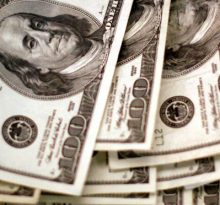Gold Hits Record High Above $3,100 as Trump Tariff Concerns Drive Safe Haven Demand

Gold prices surged to fresh record highs during Asian trading on Monday, lifted by mounting demand for safe haven assets amid growing concerns that U.S. President Donald Trump is preparing to impose sweeping new trade tariffs this week.
The yellow metal has been on a strong upward trajectory throughout March, fueled by heightened risk aversion as investors braced for the economic fallout from Trump’s aggressive trade stance. Fears of a looming U.S. recession added further momentum to the rally, with Goldman Sachs now assigning a 35% probability of a recession within the next 12 months.
In early trade, spot gold soared to an all-time high of $3,115.96 per ounce, while gold futures expiring in June reached a peak of $3,147.00. Both instruments remained just below their highs as of 01:15 ET (05:15 GMT). A softer U.S. dollar also supported gold prices, while broader metals markets mostly declined.
Trump’s Tariff Plans Trigger Risk Aversion
The spike in gold was driven largely by safe haven inflows following a Wall Street Journal report that Trump is weighing higher tariffs on a wider range of countries. The report comes ahead of an anticipated announcement of “reciprocal tariffs” scheduled for April 2, a date Trump has referred to as “liberation day.”
The administration is reportedly targeting at least 15 countries, with some insiders suggesting the list could be even broader. Among the measures under consideration is a flat 20% tariff on all nations with which the U.S. runs a trade deficit. In addition, Trump’s 25% tariff on auto imports is set to take effect on April 2, with exemptions for Canada and Mexico also expiring the same day. Further tariffs on semiconductors, key commodities, and pharmaceuticals are also being threatened.
This uncertainty over the scope and scale of the tariffs has led to a sharp decline in investor risk appetite, with capital rotating into gold and the Japanese yen.
Mixed Reactions in Broader Metals Market
Other precious metals saw mixed performance. Platinum futures held steady at $1,001.25 per ounce, while silver futures climbed 0.7% to $35.065 per ounce.
Industrial metals were mostly weaker. London Metal Exchange benchmark copper futures fell 0.3% to $9,747.50 per ton, while U.S. copper futures dropped 0.7% to $5.0955 per pound, pulling back further from recent record levels.
Although Chinese purchasing managers index (PMI) data came in stronger than expected, it offered little support to copper prices. The red metal had seen strong gains earlier in March following Trump’s threat of a 25% tariff on copper imports—a move that could significantly strain U.S. supply.
Recession Worries Deepen Amid Inflation Risks
Investor caution was also reinforced by growing fears of a U.S. recession. Goldman Sachs revised its recession forecast to a 35% chance over the next year, up from a previous estimate of 20%.
The bank warned that Trump’s tariffs could push inflation higher while weakening economic growth. Goldman now expects core PCE inflation, the Federal Reserve’s preferred measure, to rise to 3.5% by the end of 2025. GDP growth is forecast to slow to just 1% this year.
As economic uncertainty persists, gold appears well-positioned to remain a preferred refuge for investors navigating volatile markets.
Risk Warning: CFDs are complex instruments and come with a high risk of losing money rapidly due to leverage. 80.25% of retail investor accounts lose money when trading CFDs with this provider. You should consider whether you understand how CFDs work and whether you can afford to take the high risk of losing your money.
Disclaimer: This text constitutes marketing communication. It is not any form of investment advice or investment research or an offer for any transactions in financial instrument. Its content does not take into consideration individual circumstances of the readers, their experience or financial situation. The past performance is not a guarantee or prediction of future results.






